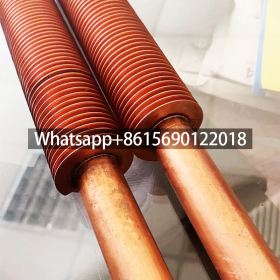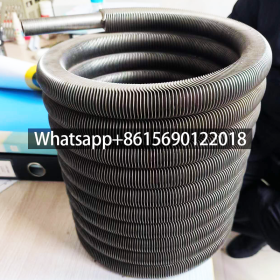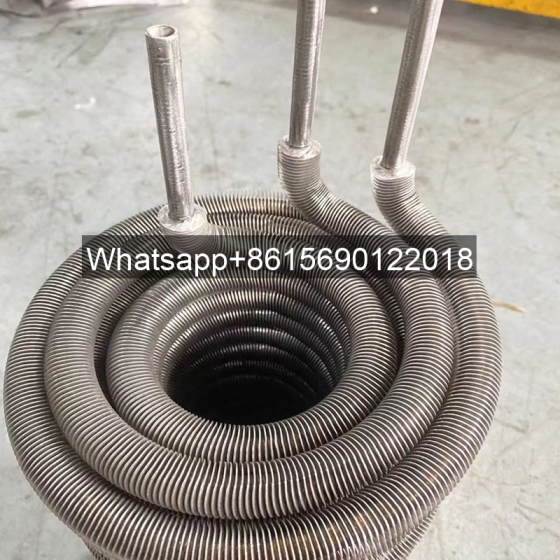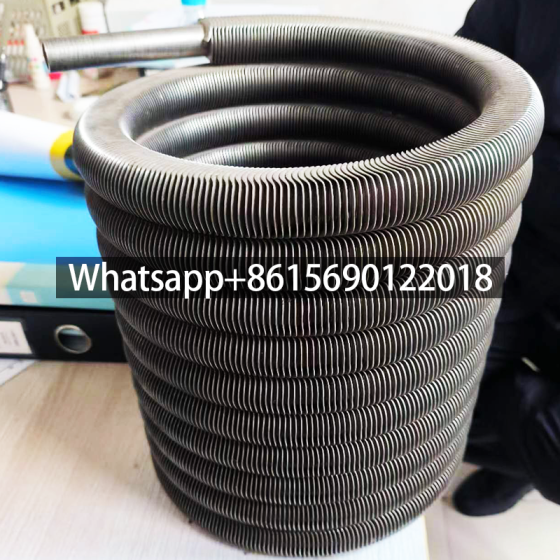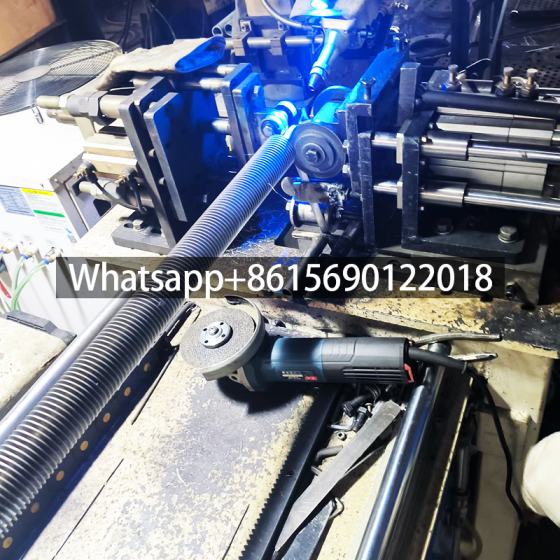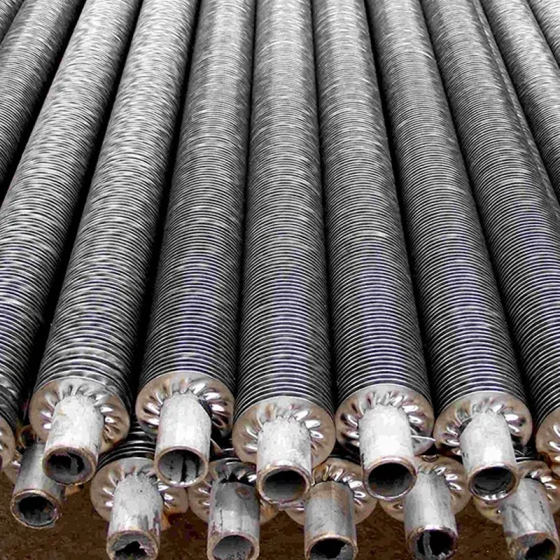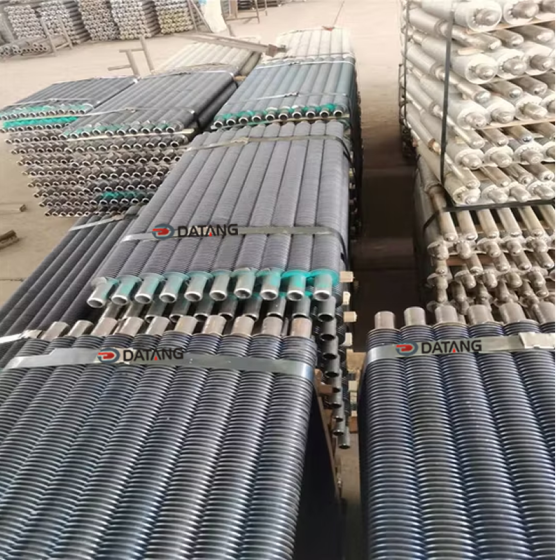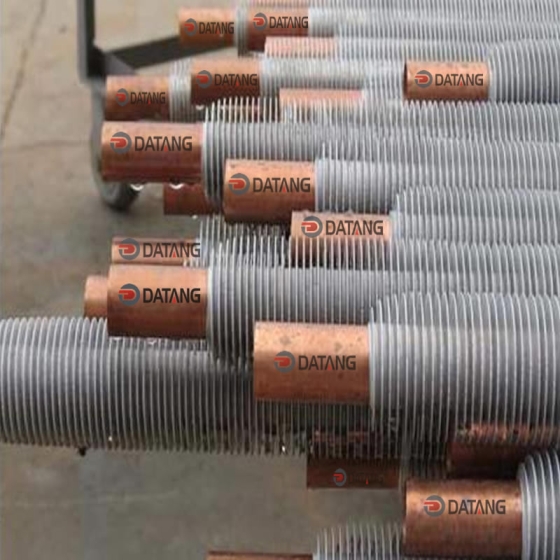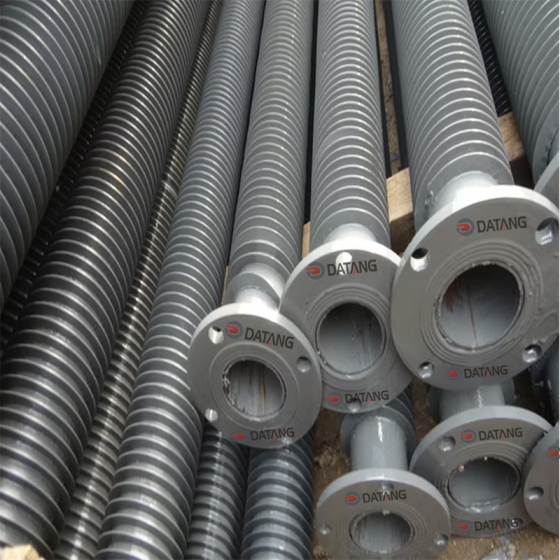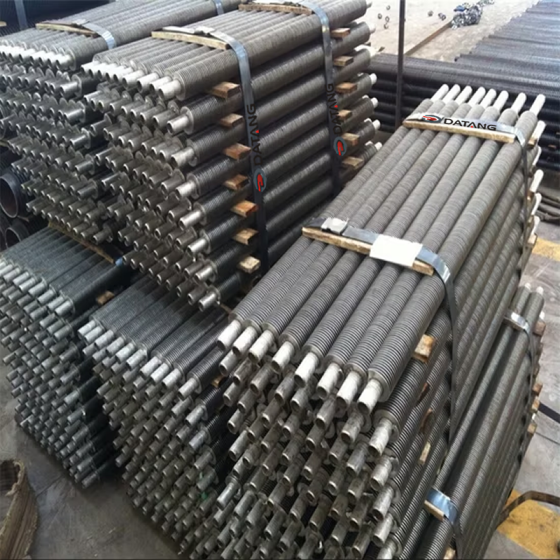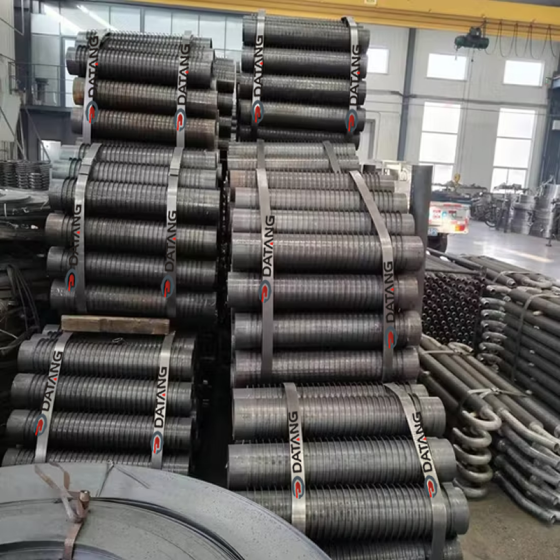Laser welded fin tube for heat exchanger
Laser welded fin tube is a high-efficiency heat exchange element, which combines the advantages of laser welding technology and fin tube, and shows excellent performance and application value in the field of industrial heat exchange.
Basic concept of laser welded fin tube
Laser welded fin tube is a heat exchange tube that firmly connects the fin and the base tube by laser welding technology.
Fins and base tubes can be made of a variety of materials such as stainless steel, titanium, copper, carbon steel, etc. to meet the needs of different application scenarios. This structure not only increases the heat exchange area, but also improves the heat exchange efficiency, making laser welded fin tubes the preferred heat exchange element in many industrial fields.
Working principle of laser welded fin tube
The working principle of laser welded fin tube is based on the principle of heat exchange. When the fluid (such as gas or liquid) flows in the tube, the heat is transferred to the fin through the heat conduction between the fin and the tube wall, and then dissipated by the fin to the surrounding environment.
Laser welding technology ensures a close connection between the fin and the base tube, reduces thermal resistance, and improves heat exchange efficiency. At the same time, the structural design of laser welded fin tubes greatly improves the heat transfer efficiency, can withstand greater working pressure, and is suitable for various harsh working conditions.
Laser welding fin tube manufacturing process
The manufacturing process of laser welded fin tubes mainly includes raw material preparation, cutting and blanking, forming processing, cleaning processing, pretreatment, equipment debugging, clamping and positioning, welding operation, appearance inspection, dimension measurement, weld detection, performance testing, cleaning processing and anti-corrosion treatment.
1. Laser welded fin tubes in the raw material preparation stage
It is necessary to select suitable base tubes and fin materials. The base tube is usually made of high-quality materials such as stainless steel (such as 304, 316L, etc.) and carbon steel, and the surface is required to be smooth and without obvious defects. The fin material is selected according to factors such as thermal conductivity, corrosion resistance and cost.
2. Laser welded fin tube cutting and blanking stage
Use equipment such as laser cutting machine or plasma cutting machine to cut the fin material into the required shape and size. In the forming stage, the cut fins are bent, rolled and other forming processes are performed to make them fit better with the base tube.
3. Cleaning and pretreatment stage of laser welded fin tubes
The welding surfaces of the base tube and fins are cleaned to remove impurities such as oil, rust, and dust to improve the welding quality. If necessary, the base tube and fin surfaces can also be pretreated by nickel plating, copper plating, etc. to improve welding performance and corrosion resistance.
4. Equipment debugging stage of laser welded fin tubes
According to the material, thickness and other parameters of the base tube and fin, the power, frequency, pulse width, welding speed and focus position of the laser welding machine are accurately adjusted.
In the clamping and positioning stage, the base tube and fin are clamped and positioned according to the design requirements to ensure that the relative position between the two is accurate.
5. Laser welded fin tube welding operation stage
Start the laser welding machine to focus the laser beam on the joint between the base tube and the fin, so that the local metal is quickly melted to form a molten pool.
As the laser beam moves, the molten pool cools and solidifies, thus achieving a firm connection between the base tube and the fin. At the same time, a protective gas (such as argon, helium, etc.) is introduced to prevent the weld from oxidation and nitridation.
6.Laser welded fin tube After welding
it is necessary to perform appearance inspection, dimension measurement, weld inspection, and performance testing to ensure that the quality of the laser welded fin tube meets the design requirements.
7. Perform cleaning and anti-corrosion treatment
Improve the corrosion resistance and service life of the laser welded fin tube.
What are the advantages of laser welded finned tubes compared to other types of fin tubes?
Compared with other types of fin tubes, laser welded fin tubes have significant advantages in welding quality, thermal performance, processing accuracy and scope of application, as follows:
Welding quality and reliability
High welding strength of laser welded fin tubes:
The energy density of laser welding is extremely high, which can achieve deep fusion of fins and base tubes to form a strong metallurgical bond. The strength of the welded joint is much higher than that of traditional welding methods, and it can withstand higher pressure and thermal stress. It is not easy to crack or fall off the welded parts under long-term and complex working conditions.
Good sealing of laser welded fin tubes:
Laser welding can achieve high-precision welding, and the weld is continuous and dense, which effectively avoids leakage problems. This is crucial for applications in some systems that require strict sealing, such as refrigeration systems and chemical fluid delivery systems. It can prevent leakage of working media and ensure the safe and stable operation of the system.
Laser welded fin tubes have good welding stability:
The laser welding process is less affected by human factors, has a high degree of automation, and the welding parameters can be precisely controlled with good repeatability, which can ensure that the welding quality of each fin tube is highly consistent, and the consistency and reliability of the product are greatly improved.
Laser welded fin tube heat transfer performance
Laser welded fin tubes have low thermal resistance:
Since the laser welded fins are tightly combined with the base tube, the contact thermal resistance at the interface is extremely small, and the heat can be efficiently transferred from the base tube to the fins, and then dissipated from the fins to the surrounding environment, thereby improving the heat transfer efficiency of the entire fin tube.
Laser welded fin tubes have high fin efficiency:
The fins of laser welded fin tubes are less affected by heat during the welding process, and can better maintain their original shape and dimensional accuracy. The heat dissipation area of the fins can be fully utilized, and the fin efficiency is high. This means that under the same heat exchange conditions, laser welded fin tubes can achieve the same heat exchange effect with fewer fins or smaller fin sizes, thereby saving material costs and space.
Laser welded fin tube processing accuracy and appearance
Laser welded fin tube has high dimensional accuracy:
The laser beam has good directionality and focusing. During the welding process, the welding position and the size of the molten pool can be accurately controlled to achieve high-precision welding between the fin and the base tube. The dimensional accuracy of the fin spacing, height, etc. can be strictly guaranteed, which is very critical for some application scenarios with strict requirements on the size of the fin tube, such as aerospace, electronic equipment heat dissipation and other fields.
Laser welded fin tube has good appearance quality:
The heat affected zone is small during laser welding, and it will not cause large-scale thermal damage and deformation to the surface of the fin and base tube. The surface of the welded fin tube is smooth and flat, without obvious welding spatter and burrs, and the appearance quality is good. There is no need for a lot of subsequent surface treatment work, and it can be directly used in occasions with high requirements for appearance.
Material adaptability and application range of laser welded fin tube
Laser welded fin tube has wide compatibility:
Laser welding is suitable for a variety of metal materials and their combinations. Whether it is common metals such as carbon steel, stainless steel, copper, aluminum, or some high melting point and high strength alloy materials, good welding effects can be achieved. This enables laser welded fin tubes to select the most suitable material combination according to different use environments and performance requirements, broadening their application range.
Laser welded fin tubes are suitable for complex structures and special requirements:
For some fin tubes with complex fin shapes (such as special-shaped fins, porous fins, etc.) or special structures (such as multi-layer fins, spirally wound fins, etc.), laser welding can achieve accurate welding connections with its high precision and flexibility to meet special design and application requirements.
For example, in some high-efficiency heat exchangers, fin tubes with special structures are required to enhance the disturbance and mixing of the fluid. Laser welded fin tubes can well meet the manufacturing requirements of such complex structures.
Key features of laser welded fin tubes:
.Heat exchange efficiency of laser welded fin tubes
The heat exchange area per unit length can reach 5–12 times that of light tubes, and the exhaust temperature is reduced by 30–50°C.
.Corrosion resistance of laser welded fin tubes
Stainless steel base tube + laser welded seamless structure, salt spray test life exceeds 5 years.
.Customization flexibility of laser welded fin tubes
Supports non-standard tube diameters (such as elliptical tubes), special-shaped fins and special material combinations.
Note: The specific selection needs to be combined with the medium characteristics, space restrictions and heat load requirements.
 dtfinnedtube.com
dtfinnedtube.com




